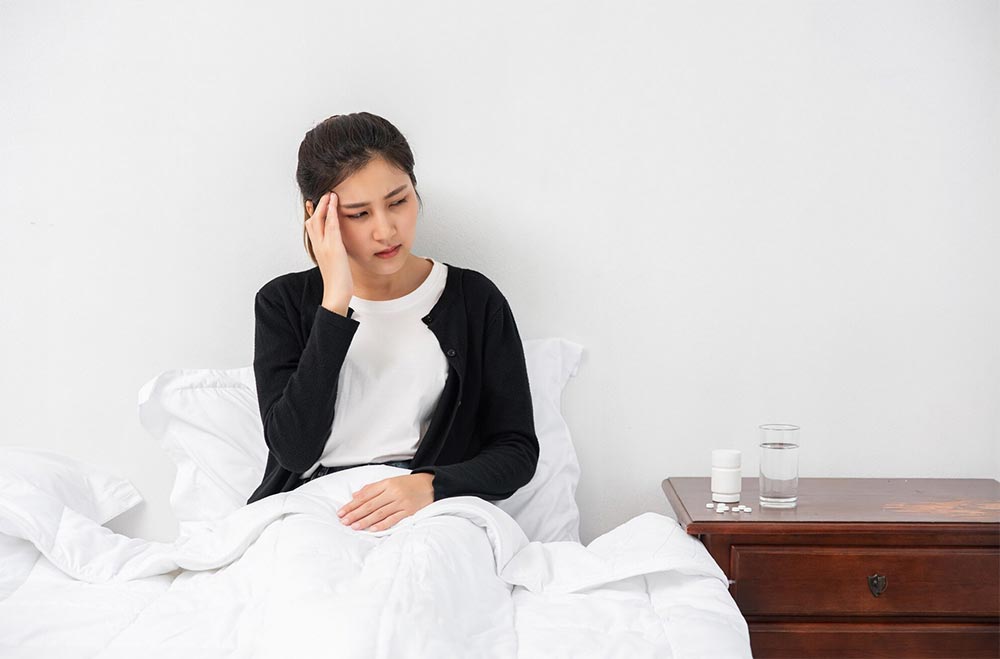Every day, we struggle to balance our families, careers, errands, house chores, sports, leisure activities, and many other commitments. Maintaining a work-life balance while also paying attention to our health is never simple. We undoubtedly have a lot of challenges trying to finish all on our to-do list, and nothing could be more disruptive to our routines than health issues like migraines.
A migraine is a moderate to severe headache usually characterized by throbbing pain on one side of the head. Additionally, a lot of people experience symptoms like feeling of being unwell, as well as increased sensitivity to light or sound.
Around 1 in 5 women and 1 in 15 men suffer migraines, making it a widespread medical disease. Early adulthood is typically when they start.
Millions of Americans suffer from migraines, and if you’re one of them, you know they’re much more than simply a headache. A migraine can be excruciating, with severe throbbing, pulsating, and agonizing discomfort. According to the Migraine Research Foundation, more than 90% of persons who experience migraines cannot work or function normally during an attack.
What causes migraines?
Although the exact cause of migraines is unknown, it is believed that temporary changes in the brain’s chemicals, blood vessels, and nerves are to be blamed.
Nearly half of all migraine sufferers also have a close family member who has the disorder, which raises the possibility that genes may be involved.
Some people believe specific triggers, such as those listed below, are connected to migraine attacks.
- beginning of a woman’s period
- stress
- tiredness
- some food or drinks
Treating Migraines
Although there is no known cure for migraines, there are several therapies that might help lessen the symptoms. These consist of:
- Pain relievers – over-the-counter drugs like paracetamol and ibuprofen
- Triptans – drugs that can be used to treat migraines by reversing changes in the brain.
- Anti-emetics – drugs used to treat nausea and other symptoms of illness in patients.
There are people who experience migraines and choose to medicate, but many also prefer to use natural solutions to treat these migraines. They turn to natural therapies such as relaxation techniques and herbal remedies.
Worldwide, cultures created herbal treatments for headaches and other typical migraine symptoms years before modern medicine was invented. Numerous of these medicinal customs have endured the test of time. Even though most herbal migraine treatments haven’t undergone extensive scientific testing to determine their efficacy, many are quickly gaining acceptance in the field of modern medicine.
5 Migraine Herbal Remedies You Can Try
1) Ginger
Ginger has been used for a long time to relieve nausea brought on by a number of illnesses, including migraines.
A study involving 100 individuals suffering from migraines compared the efficacy of ginger powder to sumatriptan, a common migraine drug. Researchers found that ginger was statistically as beneficial as sumatriptan. However, to substantiate such claims, more research needs to be conducted.
2) Lavender Oil
Lavender essential oil inhalation may reduce migraine discomfort. You can apply lavender oil in little amounts to your temples and breathe it in straight or dilute it with a carrier oil.
According to a 2016 randomized controlled research, using lavender for three months as a preventative therapy—that is, taken before a migraine attack—reduced the incidence and severity of migraine episodes. Research on this is still limited, though.
3) Feverfew
Feverfew is an herb that blooms and resembles a daisy. It is a traditional cure for migraines. Even though additional research is needed, there is some indication that it may be a marginally better migraine treatment than a placebo.
4) Peppermint Oil
There is very little study but the menthol component in peppermint oil may help prevent migraine attacks.
Although there has been little research on peppermint leaves, the National Center for Complementary and Integrative Health says that there is some evidence that topical peppermint oil may help with tension headaches.
5) Butterbur
A variety of shrub known as butterbur, or Petasites hybridus, is commonly found throughout Europe, as well as in a few locations in Asia and North America. It is a member of the sunflower family of plants, related to the dandelion, marigold, dahlia, safflower, thistle, and artichoke.
Butterbur extract has been shown to naturally treat migraines and reduce migraine frequency by 48% over a four-month treatment period in a research that was published in Neurology. Similar outcomes were discovered in another research, which revealed that the herb considerably outperformed the placebo and reduced the number of migraines by 47%.
Migraines can significantly lower your quality of life and make it difficult for you to go about your everyday activities. Some folks discover they must spend days at a time in bed.
When contemplating herbal migraine therapies, always proceed with caution. Many herbs interact negatively with other medications. Before starting or stopping any medical or herbal treatment, discuss it with a healthcare provider. They may refer you to the nearest migraine clinical trials in your area so you may find the best and safest treatment options available.

